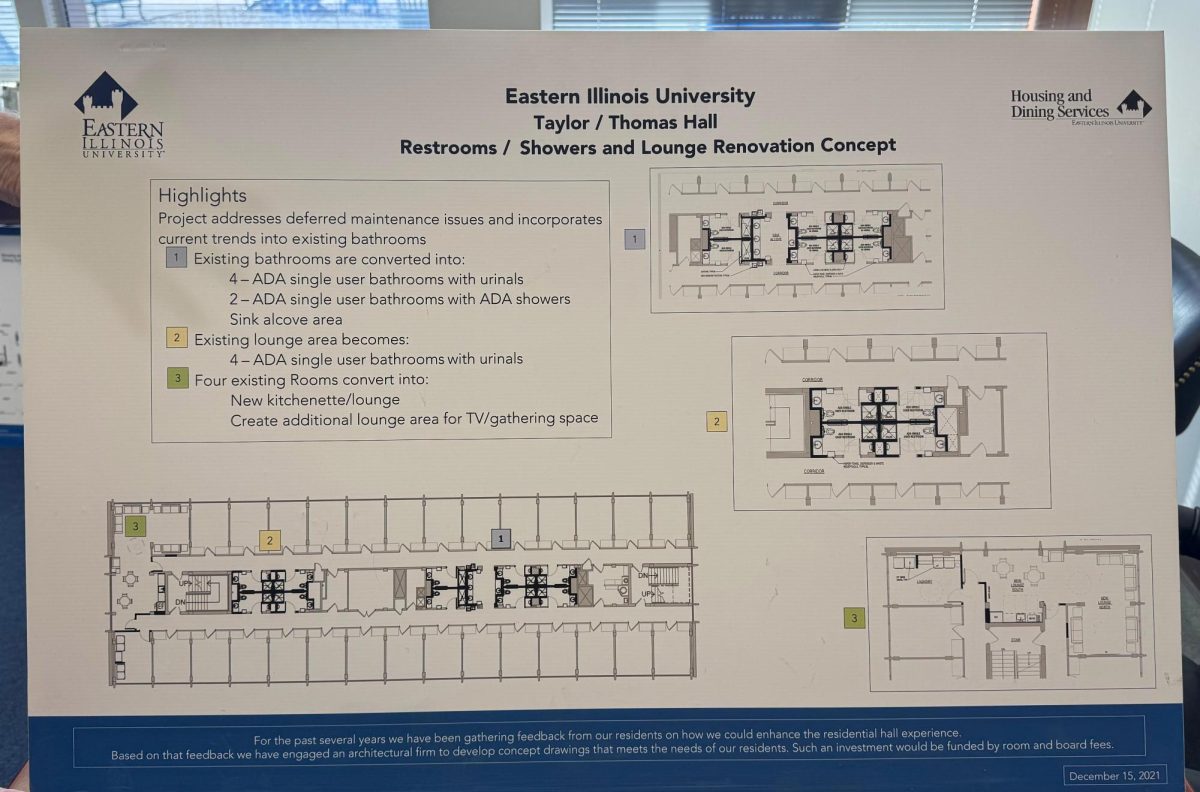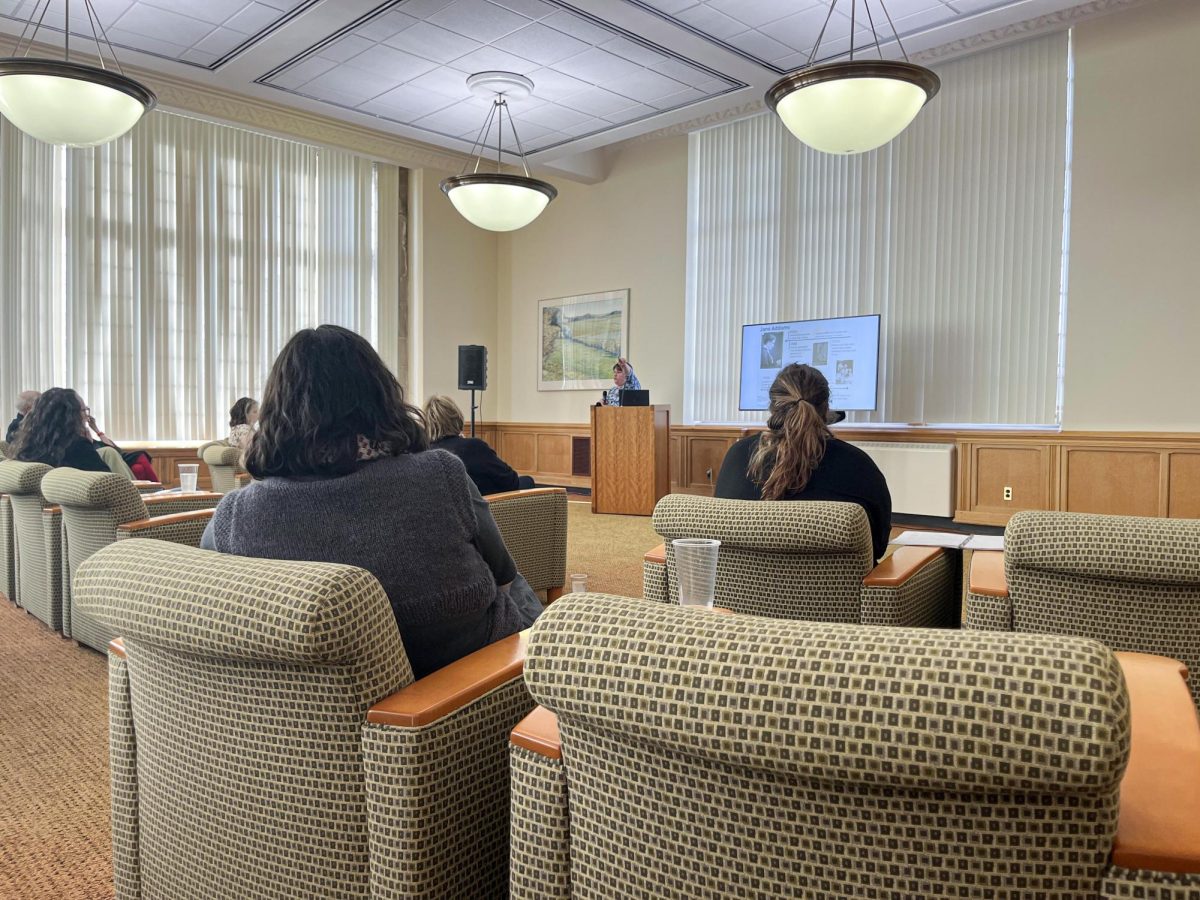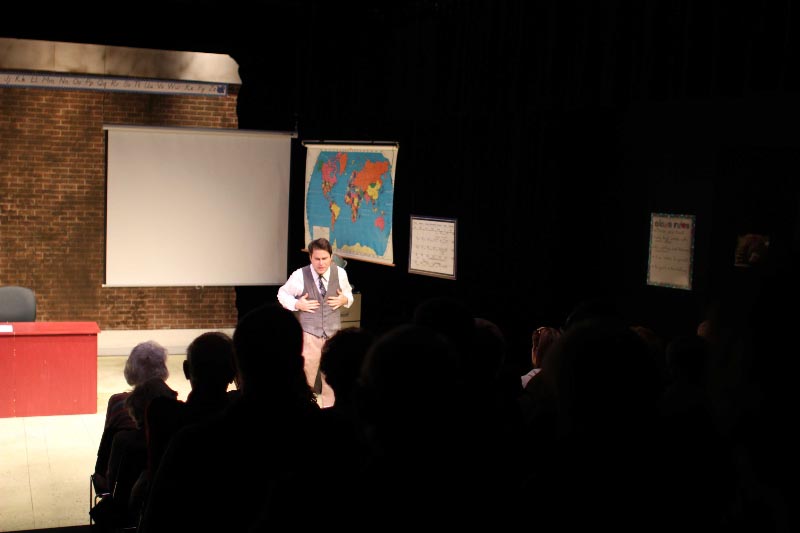Ex-Supreme pays tribute
The walls and the audience in the Dvorak Concert Hall were covered in speckles of light like stars after stormy weather.
Mary Wilson, a member of the ‘60s band The Supremes performed songs by Lena Horne in a sparkly dress to display Horne’s glamour as an actress and singer.
The show, “Stormy Weather: The Lena Horne Project” on Nov. 16, was based off of James Gavin’s book of the same name.
The show was in honor of Lena Horne.
Horne was one of the first black actresses and singers to appear on TV in the early 1930s and she was also a civil rights activist.
Wilson described the show as a “multimedia performance” because there were readings from Gavin’s book, audio and video clips, photo slide show and Wilson’s singing.
Richard Guss, a junior theatre arts major, said Horne was a well known name around his family’s house.
“Lena Horne has always been a household name,” Guss said. “I remember hearing stories of my great-grandmother going to see the Wiz and how they all stood up and clapped after she sang.”
Margaret Niccum, of Greenup, said she became a fan of Horne’s from her brother in the early 1940s.
“As an 8-year-old child, my brother and his girlfriend’s favorite singer was Lena Horne,” Niccum said.
Most people did not know that Horne often battled with the life as a black singer and actress in the spotlight.
Niccum said as a long-time fan, she learned something new about Horne from the show.
“I learned the extensiveness that she was tormented with racism,” Niccum said.
Because Horne was in the spotlight, she was also easy to target, especially since she was an activist for civil rights.
Guss said he knew she was a leader in the beginning of the civil rights movement, but he did not realize that people did not consider her important to the movement.
“I know that she was in the civil rights movement, but I did not know the extent of how the community viewed her as unattached or as knowing what the rest of society was going through,” Guss said.
Horne, deemed “Queen of the Supper Clubs,” would often perform at clubs and at the same time, not be able to enter them as a black guest.
Wilson, who sang Horne’s songs such as “The Lady is a Tramp” and “The Man I Love” at the show, said Horne was trying to open doors for the black community when it was not popular in the early ’30s and ’40s.
“She was already doing it at a time when the black people were not doing that well in America,” Wilson said. “I was around later, and it still wasn’t good. We couldn’t be in a room like this.”
Horne subsequently became closed off and angry when she was home and not performing.
Gavin said when he went to meet with Horne, he noticed that Horne had a long life.
“To me, Lena was warm, funny, more than a little sad and weary,” Gavin said.
Gavin quoted what Horne said about her life in the spotlight.
“I was never allowed to enjoy the damn thing,” Gavin recited.
Horne later performed in the one-woman show, “Lena Horne: The Lady and Her Music in the early 1980’s.”
She won two Grammy Awards from the show and two others: the Lifetime Achievement Award in 1989 and the Best Jazz Vocal Performance in 1995.
Guss said he knew what Horne’s attitude and personality was, but he got to see how she became Lena Horne.
“This is a diva,” Guss said. “You know, she has a reason. Her attitude and her just, everything—it’s just intoxicating.”
Amanda Wilkinson can be reached at 581-2812 or akwilkinson@eiu.edu.









![[Thumbnail Edition] Eastern Illinois University baseball senior utility player Tyler Castro fields a ground ball during the team's first intrasquad scrimmage of the season on Jan. 31.](https://www.dailyeasternnews.com/wp-content/uploads/2025/03/BB_01_O-e1742874760130-1-e1742907504722-1200x911.jpg)

![[Thumbnail Edition] Senior tennis player Luisa Renovales Salazar hits the tennis ball with her racket at the Darling Courts at the Eastern Illinois University campus in Charleston, ILL.](https://www.dailyeasternnews.com/wp-content/uploads/2025/03/Tennis_01_O-1-e1741807434552-1200x670.jpg)

























![[Thumbnail Edition] Senior right-handed pitcher Tyler Conklin pitching in the Eastern Illinois University baseball team's intrasquad scrimmage at O'Brien Field in Charleston, Illinois on Jan. 31.](https://www.dailyeasternnews.com/wp-content/uploads/2025/03/TC_01_O-e1741567955534-1200x669.jpg)
![E[Thumbnail Edition] Eastern Illinois softball freshman utility player Abbi Hatton deciding to throw the softball to home plate in a fielding drill during softball practice at the field house in Groniger arena on Tuesday Feb. 11.](https://www.dailyeasternnews.com/wp-content/uploads/2025/03/SB_03_O-e1741208880750-1-e1741209739187-1200x815.jpg)














![The Weeklings lead guitarist John Merjave [Left] and guitarist Bob Burger [Right] perform "I Am the Walrus" at The Weeklings Beatles Bash concert in the Dvorak Concert Hall on Saturday.](https://www.dailyeasternnews.com/wp-content/uploads/2025/03/WL_01_O-1200x900.jpg)
![The team listens as its captain Patience Cox [Number 25] lectures to them about what's appropriate to talk about through practice during "The Wolves" on Thursday, March 6, in the Black Box Theatre in the Doudna Fine Arts Center in Charleston, Ill.](https://www.dailyeasternnews.com/wp-content/uploads/2025/03/WolvesPre-12-1200x800.jpg)





















